Number Recognition Cursive Numbers Worksheets for Ages 4-8
9 filtered results
-
From - To
Unlock your child's potential with our Number Recognition Cursive Numbers Worksheets, specifically designed for ages 4-8! These engaging worksheets combine the elegance of cursive writing with essential number recognition skills, fostering early math development and fine motor precision. Perfectly suited for young learners, each worksheet includes fun, interactive activities that make learning numbers an enjoyable experience. As children practice, they gain confidence in both writing and identifying numbers, setting a strong foundation for future academic success. Enhance your child’s numeracy and handwriting abilities today with our expertly crafted educational resources! Enhance learning with creativity and fun, right from home.
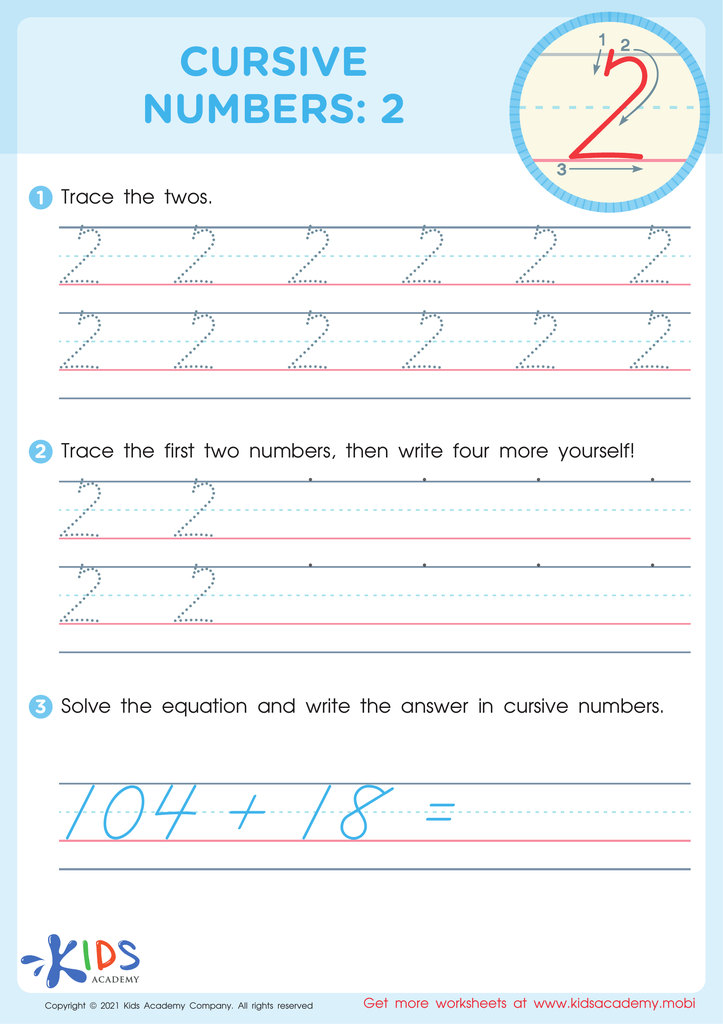

Cursive Numbers: 2 Worksheet


Cursive Numbers: 6 Worksheet
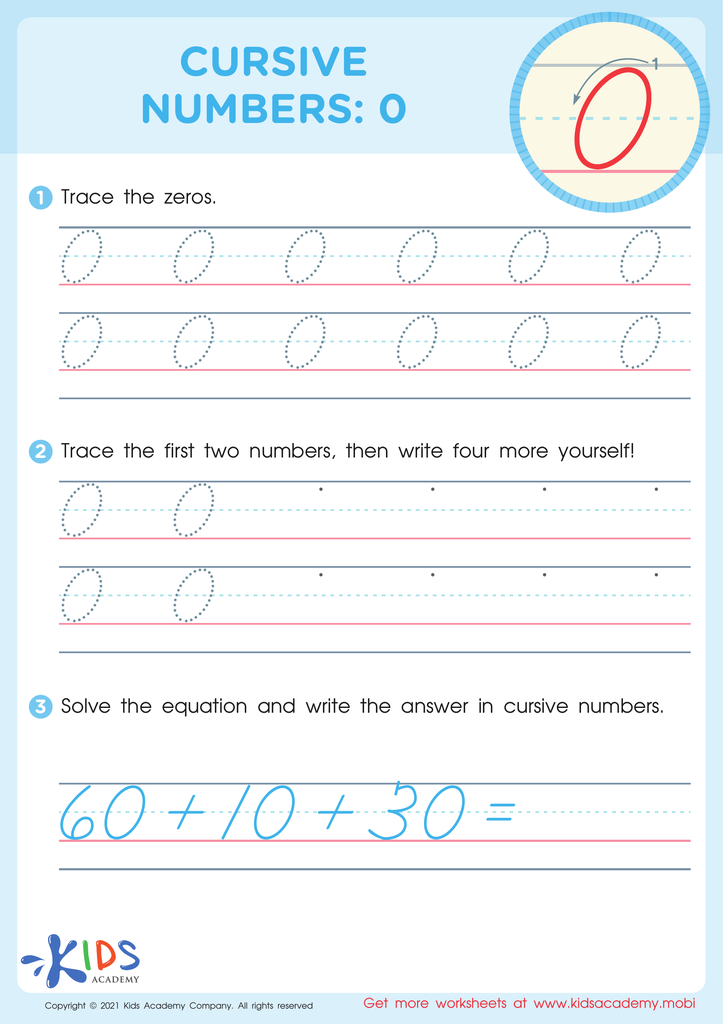

Cursive Numbers: 0 Worksheet
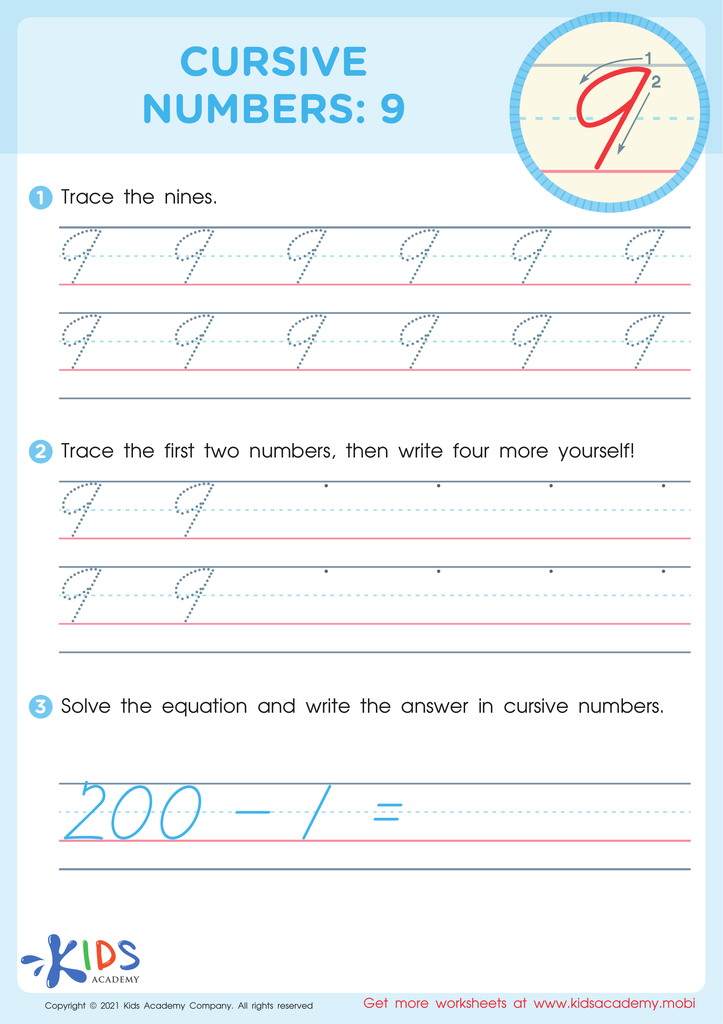

Cursive Numbers: 9 Worksheet
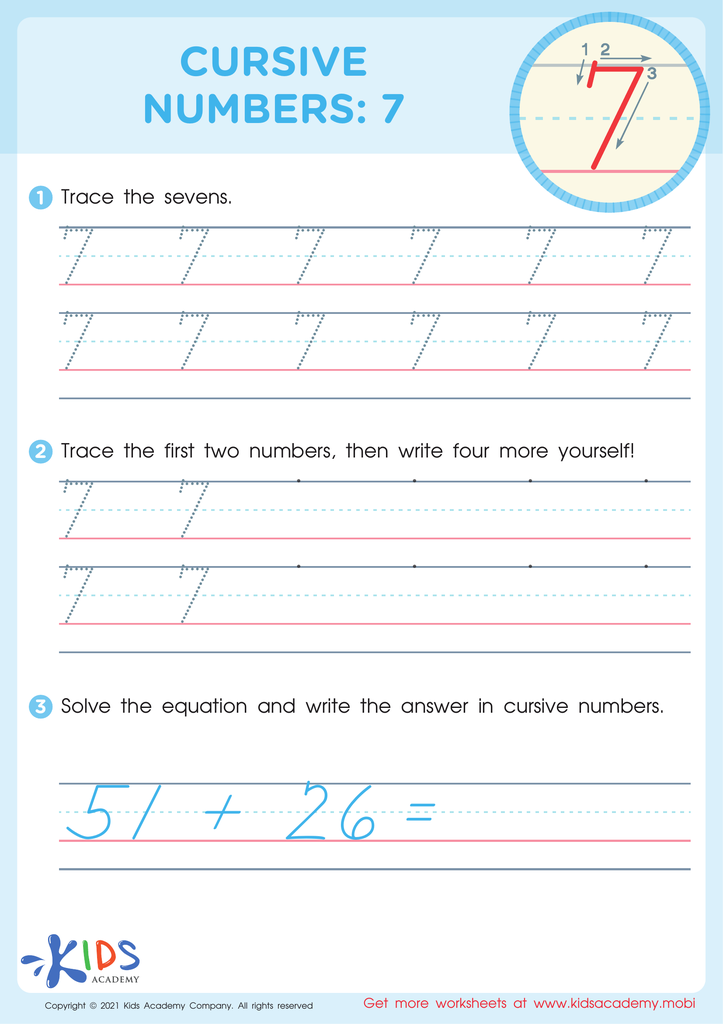

Cursive Numbers: 7 Worksheet
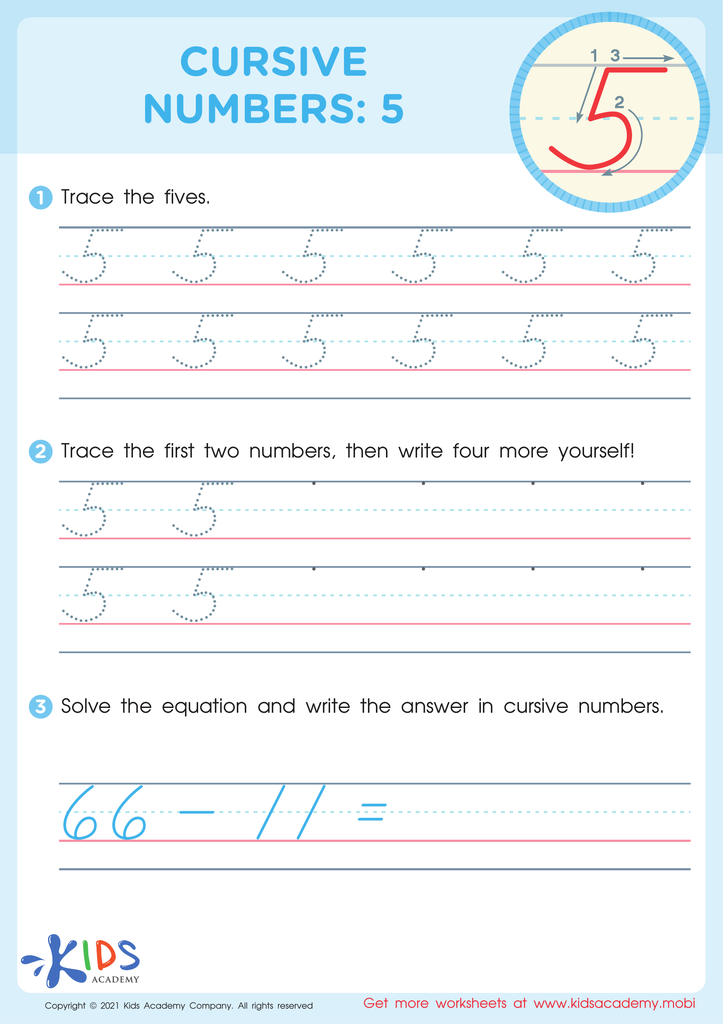

Cursive Numbers: 5 Worksheet
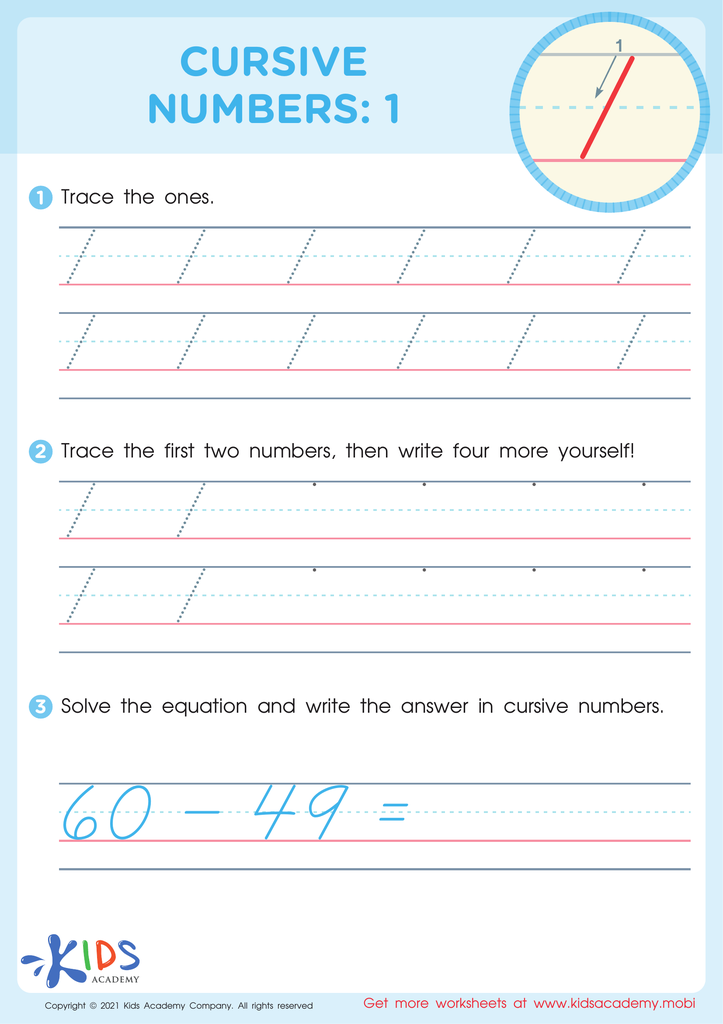

Cursive Numbers: 1 Worksheet
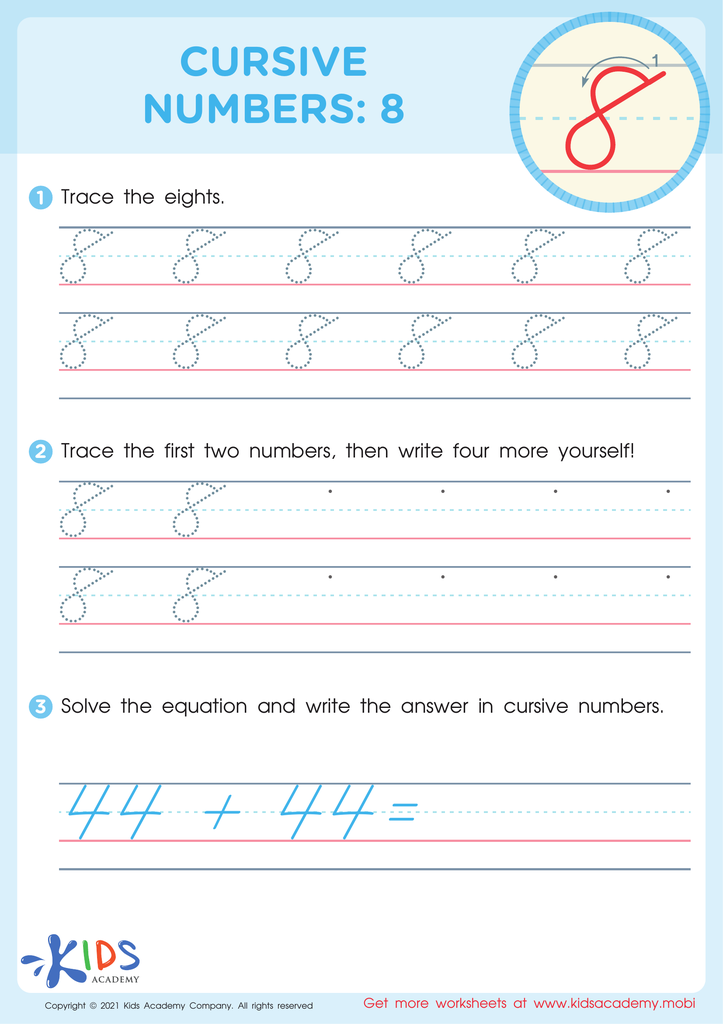

Cursive Numbers: 8 Worksheet
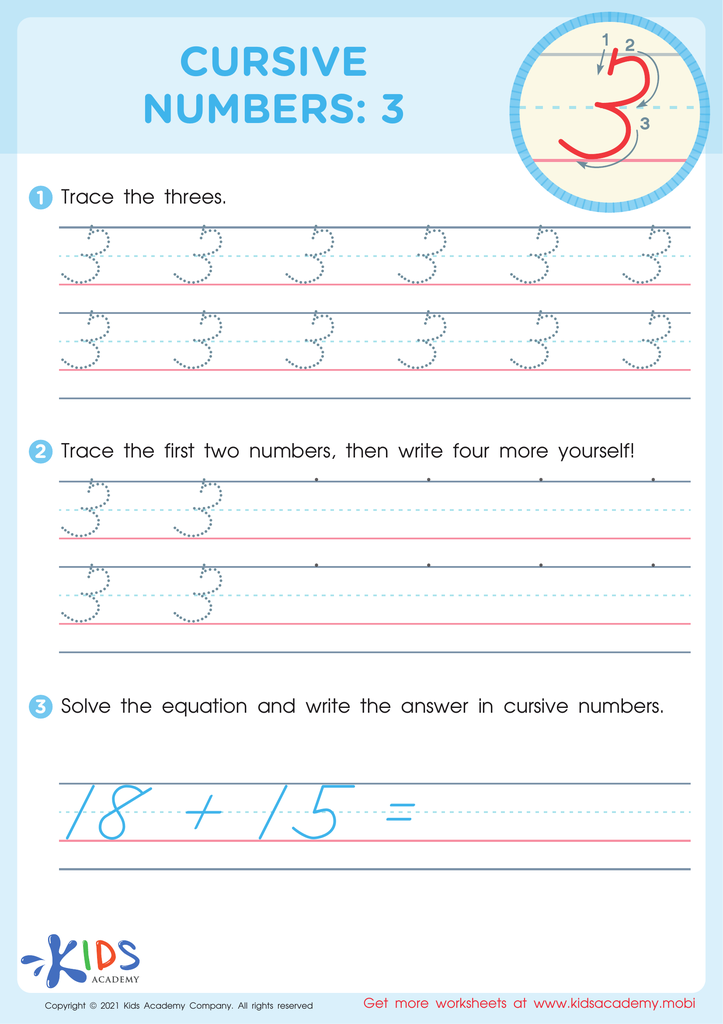

Cursive Numbers: 3 Worksheet
Parents and teachers should care about number recognition and cursive numbers for children aged 4-8 because it forms a crucial foundation for a child’s educational journey. Number recognition is the ability to visually identify and verbalize numbers, which is essential for developing mathematical skills. At this young age, children's brains are particularly receptive to learning new concepts, and fostering number literacy early can promote confidence and enthusiasm for future mathematical challenges.
Learning cursive numbers provides dual benefits: it enhances motor skills and supports cognitive development. Writing in cursive involves more complex motor patterns, aiding in the development of fine motor skills, hand-eye coordination, and muscle memory. These skills are not only fundamental for writing proficiency but also beneficial for tasks requiring dexterous control such as playing musical instruments or sports.
Moreover, the practice of writing numbers in cursive encourages concentration, discipline, and attention to detail. It has been found that learning cursive can improve children's reading and spelling skills, providing a broader cognitive advantage.
Early exposure to number recognition and cursive writing empowers children with the tools they need to succeed in their academic endeavors, setting them up for lifelong learning and helping to cultivate a well-rounded skill set. Parents and teachers have a pivotal role in encouraging these early developmental milestones.


















